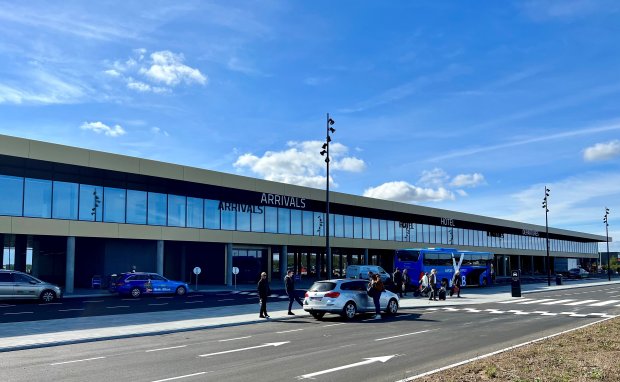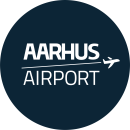Routes Europe host Aarhus ranks highest among Europe’s top potential regional airports in new air connectivity study
 Credit: Aarhus Airport
Credit: Aarhus Airport
Aarhus Airport secures a top-tier position in newly released ACI Europe study of flight connectivity which considers quality, economic importance, relevance and value of air service, as well as volume
Strong year-round air service to and from well-connected Nordic hubs has helped earn Aarhus Airport a top-tier position in a newly released Europe-wide study of flight connectivity which considers market linkage by economic importance, relevance, value and quality of air service, as well as volume.
The study, commissioned and reported by the international association ACI Europe (Airports Council International) representing over 500 of Europe’s airports has placed Aarhus Airport among the top ten in part of its annual Connectivity Report. It includes new, more nuanced metrics by SEO Amsterdam Economics that combine analysis of the number of direct and connecting flights offered at an airport with more complex weighted factors evaluating associated human benefits, the features of destinations as a mark of value, associated service sector and economic relevance to the origin market, in addition to GDP and population data, known as a PCA (Power City Access) index. According to ACI Europe, the airport industry’s leading insight provider, Power Cities – also known as global, world or alpha cities – is founded upon Globalisation and World Cities (GaWC) measures which factor global significance around economic terms, population size, cultural diversity, deep value chains, number of multinational companies, major education and research institutions and financial market influence among others. GaWC examples such as London, New York, Paris, Madrid, Dubai, Los Angeles, Istanbul and Tokyo top the list of globally important cities. Airports that offer good connectivity to these and other regional Power Cities, indirectly if lacking direct flight service, can now also be ranked by quality of air connectivity nuanced to the cities and communities they serve, enabling strong international economic bond – as with the example of Aarhus cited in this year’s report.
The ACI Europe study’s outcomes are rankings that identify not only the largest airports – London Heathrow is ranked top in Europe – but also those regional airports which significantly out-perform their prevailing level of direct flight destinations due to the high quality of connecting air service in place for inhabitants, visitors and businesses, thus highlighting their overall traffic potential. This new methodology places Aarhus Airport a total of 148 places higher on ACI Europe’s newly adjusted report than otherwise listed, attaining 119th position ranked among all European airports. This means Aarhus ranks 10th among European airport “movers” measured by net positive rank deviation, and is the highest placed of the top ten "movers" overall. Other airports seeing similar significant net positive adjusted ranking include Linz and Liege.
David Surley, Director of Route Development, Marketing & Communications at Aarhus Airport explains: “at Aarhus Airport we are well connected with all Scandinavian capitals and hubs, on a frequent basis, and thus highly aligned to the nuances of our catchment, the city’s economy and the Aarhus region overall. Extensive service to cities such as Stockholm, Oslo and Copenhagen, also our flights to London, in turn provide very high economic value of connectivity both to these and onward to many other ‘power cities’ worldwide, both east and west, which benefit residents, businesses, tourism, culture and community alike”.
Aarhus Airport’s economic value to the Aarhus region and Danish economy is estimated to be in excess of DKK2 billion (or Euro 268 million) when factoring its positive effect on regional employment, trade, industry and the valuable contribution of related tourism to the visitor economy, per a 2024 independent economic impact report. Greater Aarhus is the fifth largest metropolitan area in the Nordics, after Helsinki.
The airport’s David Surley continued, “ACI Europe analysis is always top-level and this report has long been considered a highly sophisticated study, but now with more nuanced research, their connectivity reports are even more insightful. Here in Denmark, it’s no secret that Aarhus is a high-growth city, with our major university, fast-expanding international community, a very large port underpinning extensive import/export trade and a continually strengthening regional economy. To those overseas it may be more surprising. The study has highlighted that AAR’s everyday connectivity for companies, customers and visitors is both highly market-suited and well-maintained, yet importantly it reconfirms the underlying potential to grow our future business and passenger throughput, as we ‘close the gap’ and work hard to make our route network even better. The arrival this month of Air France and KLM connectivity in codeshare with new SkyTeam member SAS, is symbolic of how the airport bridges Aarhus with a better and wider network of destinations worldwide and we hope to unveil even more strategic and direct service developments soon”.
Aarhus was recently host city of Routes Europe 2024 – the largest airline and airport network development conference in Europe, attracting over 1,200 decision-makers to the city in April, including airlines from Canada, the USA, the Middle East, all of mainland Europe, the UK and Scandinavia. The second largest city of Denmark by some margin – Aarhus itself is listed among global socio-economic indices like GaWC as a city of ‘Sufficiency’, in parallel with cities such as Basel in Switzerland, Glasgow in Scotland, Newcastle in England, Toulouse and Lille in France, also Cincinnati, Las Vegas and Orlando in the US. The economy of Aarhus has been growing steadily for some time and of increasing international significance due to the presence of the city’s vast health, medical and education platform, major science, research, culture and entertainment venues as well as numerous world-headquartered and globally operating companies – these major corporates represent just 3% of Aarhus Region companies but employ 27% of the area’s workforce and drive 33% of the region’s turnover. It is the 18th strongest regional economy in Europe by GDP.


